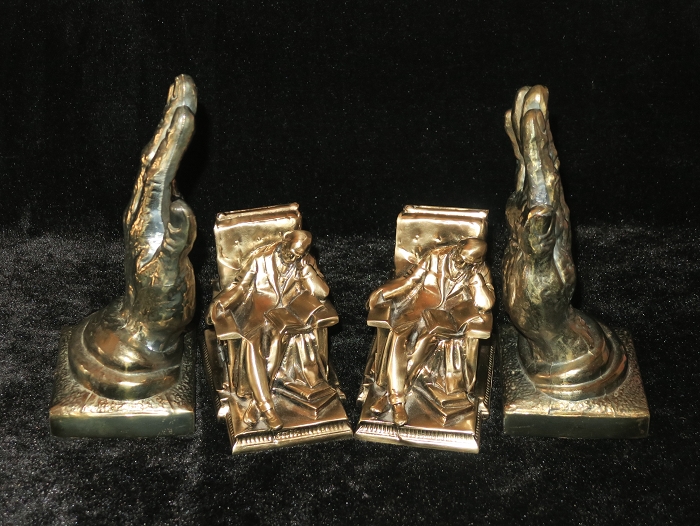
关于书档(bookend)和镇纸(paperweight)的区别,西洋古籍有其特殊开本和装帧,所以严格意义不存在“镇”,因为镇不住,只能“档”。

档分大小两种,根据开本选择尺寸。按照法国传统,每家古书籍商都有特别订制的档,除非破损,当然可能性几乎没有,否则永远使用,某种意义可视为书店招牌。

档一旦出售,意味着书店倒闭。日本西洋古籍专卖店的规矩一样,多出一条出售档意味破产,终生不得再加入任何组织。
这对手档是杜特尔朋友的旧藏,一位非常低调的顶级古籍商,他于去年12月病逝,享年94岁。
镇纸设计人是杜特尔,他结合东方镇纸在意大利订制了这套可档可镇的尤物。铜合9K金的成分使镇纸看起来美轮美奂,其实真正叹为观止之初在于造型。

The bookend is an object tall, sturdy, and heavy enough, when placed at either end of a row of upright books, to support or buttress them. Heavy bookends—made of wood, bronze, marble, and even large geodes—have been used in libraries, stores and homes for centuries; the simple sheetmetal bookend (originally patented in 1877 by William Stebbins Barnard) uses the weight of the books standing on its foot to clamp the bookend’s tall brace against the last book’s back; in libraries, simple metal brackets are often used to support the end of a row of books. Elaborate and decorative bookends are common as elements in home decor.

A paperweight is a small solid object heavy enough, when placed on top of papers, to keep them from blowing away in a breeze or from moving under the strokes of a painting brush (as with Chinese calligraphy). While any object, such as a stone, can serve as a paperweight, decorative paperweights of are produced, either by individual artisans or factories, usually in limited editions, and are collected as works of fine glass art, some of which are exhibited in museums.First produced in about 1845, particularly in France, such decorative paperweights declined in popularity before undergoing a revival in the mid-twentieth century.
